Instructions
Back:
‡
Using size 10 needles, cast on 70 (74,
80, 84, 88,
94, 102, 106,
112) stitches and work in k1/p1 rib for 2
inches, ending with a right side row.
Next row: Rib 3 (5,
5, 8, 10,
10, 14, 3,
2) *
work twice into next stitch, rib 2 (2,
2, 2, 2,
2, 2, 3,
4); repeat from *
to last 4 (6, 6,
7, 9, 9,
13, 3, 2)stitches,
work twice into next stitch, rib 3 (5,
5, 6, 8,
8, 12, 2,
1).
[ 92 (96, 104,
108, 112, 120,
128, 132, 140)
sts]
Change to size 7 needles and pattern.
1st row: [k1, p1] 1 (2,
4, 5, 6,
8, 10, 11,
13) times, * [k4, p1] twice, k2, p1, sl2f,
p1, k2 from cable needle, p6, sl1b, k2, purl stitch from cable needle,
p1, k2, [p1, k4] twice, * p12; repeat from * to * once, [p1, k1] 1 (2,
4, 5, 6,
8, 10, 11,
13) times.
2nd row: [p1, k1] 1 (2,
4, 5, 6,
8, 10, 11,
13) times, *
[p4, k1] twice, p2, k2, p2, k6, p2, k2, p2, [k1, p4] twice, *
[k1, p1, k1 all into next stitch, p3tog] 3 times; repeat from *
to * once, [k1, p1] 1 (2,
4, 5, 6,
8, 10, 11,
13) times.
3rd row: [p1, k1] 1 (2,
4, 5, 6,
8, 10, 11,
13) times, *
C4B, p1, C4F, p1, k2, p2, sl2f , p1, k2 from cable needle, p4, sl1b, k2,
purl stitch from cable needle, p2, k2, p1, C4B, p1, C4F, *p12; repeat from * to *
once, [k1, p1] 1 (2, 4,
5, 6, 8,
10, 11, 13) times.
4th row: [k1, p1] 1 (2,
4, 5, 6,
8, 10, 11,
13) times, *
[p4, k1] twice, p2, k3, p2, k4, p2, k3, p2, [k1, p4] twice, *
[p3tog, k1, p1, k1 all into next stitch] 3 times; repeat from *
to * once, [p1, k1] 1 (2,
4, 5, 6,
8, 10, 11,
13) times.
5th row: [k1, p1] 1 (2,
4, 5, 6,
8, 10, 11,
13) times, * [k4, p1] twice, k2, p3, sl2f
, p1, k2 from cable needle, p2, sl1b, k2, purl stitch from cable needle,
p3, k2, [p1, k4] twice, * p12; repeat from * to * once, [p1, k1] 1 (2,
4, 5, 6,
8, 10, 11,
13) times.
6th row: [p1, k1] 1 (2,
4, 5, 6,
8, 10, 11,
13) times, * [p4, k1] twice, p2, k4, p2,
k2, p2, k4, p2, [k1, p4] twice, * [k1, p1, k1 all into next stitch, p3tog]
3 times; repeat from * to * once, [k1, p1] 1 (2,
4, 5, 6,
8, 10, 11,
13) times.
7th row: [p1, k1] 1 (2,
4, 5, 6,
8, 10, 11,
13) times, *
C4B, p1, C4F, p1, k2, p4, sl2f , p1, k2 from cable needle, sl1b, k2, purl
stitch from cable needle, p4, k2, p1, C4B, p1, C4F, *
p12; repeat from * to *
once, [k1, p1] 1 (2, 4,
5, 6, 8,
10, 11, 13) times.
8th row: [k1, p1] 1 (2,
4, 5, 6,
8, 10, 11,
13) times, *
[p4, k1] twice, p2, k5, sl2b, p2, p2 from cable needle, k5, p2, [k1, p4]
twice, * [p3tog, k1, p1, k1 all into
next stitch] 3 times; repeat from *
to * once, [p1, k1] 1 (2,
4, 5, 6,
8, 10, 11,
13) times.
9th row: [k1, p1] 1 (2,
4, 5, 6,
8, 10, 11,
13) times, *
[k4, p1] twice, k2, p4, sl1b, k2, purl stitch from cable needle, sl2f
, p1, k2 from cable needle, p4, k2, [p1, k4] twice, *
p12; repeat from * to *
once, [p1, k1] 1 (2, 4,
5, 6, 8,
10, 11, 13) times.
10th row: [p1, k1] 1 (2,
4, 5, 6,
8, 10, 11,
13) times, * [p4, k1] twice, p2, k4, p2,
k2, p2, k4, p2, [k1, p4] twice, * [k1, p1, k1 all into next stitch, p3tog]
3 times; repeat from * to * once, [k1, p1] 1 (2,
4, 5, 6,
8, 10, 11,
13) times.
11th row: [p1, k1] 1 (2,
4, 5, 6,
8, 10, 11,
13) times, * C4B, p1, C4F, p1, k2, p3, sl1b,
k2, purl stitch from cable needle, p2, sl2f, p1, k2 from cable needle,
p3, k2, p1, C4B, p1, C4F, * p12; repeat from * to * once, [k1, p1] 1 (2,
4, 5, 6,
8, 10, 11,
13) times.
12th row: [k1, p1] 1 (2,
4, 5, 6,
8, 10, 11,
13) times, * [p4, k1] twice, p2, k3, p2,
k4, p2, k3, p2, [k1, p4] twice, * [p3tog, k1, p1, k1 all into next stitch]
3 times; repeat from * to * once, [p1, k1] 1 (2,
4, 5, 6,
8, 10, 11,
13) times.
13th row: [k1, p1] 1 (2,
4, 5, 6,
8, 10, 11,
13) times, * [k4, p1] twice, k2, p2, sl1b,
k2, purl stitch from cable needle, p4, sl2f, p1, k2 from cable needle,
p2, k2, [p1, k4] twice, * p12; repeat from * to * once, [p1, k1] 1 (2,
4, 5, 6,
8, 10, 11,
13) times.
14th row: [p1, k1] 1 (2,
4, 5, 6,
8, 10, 11,
13) times, * [p4, k1] twice, p2, k2, p2,
k6, p2, k2, p2, [k1, p4] twice, * [k1, p1, k1 all into next stitch, p3tog]
3 times; repeat from * to * once, [k1, p1] 1 (2,
4, 5, 6,
8, 10, 11,
13) times.
15th row: [p1, k1] 1 (2,
4, 5, 6,
8, 10, 11,
13) times, * C4B, p1, C4F, p1, k2, p1, sl1b,
k2, purl stitch from cable needle, p6, sl2f, p1, k2 from cable needle,
p1, k2, p1, C4B, p1, C4F, * p12; repeat from * to * once, [k1, p1] 1 (2,
4, 5, 6,
8, 10, 11,
13) times.
16th row: [k1, p1] 1 (2,
4, 5, 6,
8, 10, 11,
13) times, * [p4, k1] twice, p2, k1, p2,
k8, p2, k1, p2, [k1, p4] twice, * [p3tog, k1, p1, k1 all into next stitch]
3 times; repeat from * to * once, [p1, k1] 1 (2,
4, 5, 6,
8, 10, 11,
13) times.
These 16 rows form the pattern.
Continue in pattern until work measures 12 (13,
14, 14½, 15,
15, 15½, 15½,
16) inches from the beginning, ending with
a wrong side row.
Shape Armholes:
Keeping continuity of pattern, cast off 4 (4,
5, 5, 5,
7, 8, 8,
9) stitches at the beginning of the next
2 rows. Decrease 1 stitch at each end of the next and every following
alternate row until 80 (84, 86,
90, 92, 94,
96, 100, 104)
stitches remain.
‡
Continue without further shaping until work measures 7½ (7¾,
8, 8¼, 8½,
8¾, 9, 9¼,
9½) inches from commencement of armhole
shaping, ending with a wrong side row.
Shape Shoulders:
Cast off 6 (7, 7,
7, 7, 7,
7, 8, 8)
stitches at the beginning of the next 6 rows; then 6 (5,
5, 6, 7,
7, 8, 6,
7) stitches at the beginning of the following
2 rows. Leave the remaining 32 (32,
34, 36, 36,
38, 38, 40,
42) stitches on a spare needle.
Front:
Follow instructions as for the Back, from ‡
to ‡.
Continue without further shaping until work measures 5 (5¼,
5½, 5¾, 6,
6¼, 6½, 6¼,
7) inches from commencement of armhole shaping,
ending with a wrong side row.
Shape Shoulders:
Cast off 6 (7, 7,
7, 7, 7,
7, 8, 8)
stitches at the beginning of the next 6 rows; then 6 (5,
5, 6, 7,
7, 8, 6,
7) stitches at the beginning of the following
2 rows. Leave the remaining 32 (32,
34, 36, 36,
38, 38, 40,
42) stitches on a spare needle.
Shape Neck:
Next row: Pattern 32 (34,
34, 36, 37,
37, 38, 39,
41) stitches and turn, leaving remaining
stitches on a spare needle.
Decrease 1 stitch at the neck edge on the next 8 (8,
8, 9, 9,
9, 9, 9,
10) rows.
Continue without further shaping until work measures the same as Back
to shoulder, ending at the armhole edge.
Shape Shoulders:
Cast off 6 (7, 7,
7, 7, 7,
7, 8, 8)
stitches at the beginning of the next 2 following alternate rows.
Work 1 row.
Cast off the remaining 6 (5, 5,
6, 7, 7,
8, 6, 7)
stitches.
Slip the centre 16 (16, 18,
18, 18, 20,
20, 22, 22)
stitches on to a spare needle.
Join in yarn at neck edge to remaining stitches, and pattern to end. Complete
to match first side of neck.
Sleeves:
Using size 10 needles, cast on 42 (44,
46, 48, 50,
52, 54, 56,
58) stitches and work in k1/p1 rib for 2½
inches, ending with a right side row.
Next row: Rib 2 (5,
8, 5, 3,
7, 5, 2,
7) * work twice into next stitch, rib 1 (1,
1, 2, 3,
2, 3, 3,
3); repeat from * to last 2 (5,
8, 4, 3,
6, 5, 2,
7) stitches, work twice into next stitch,
rib 1 (4, 7,
3, 2, 5,
4, 1, 6).
[ 62 (62, 62,
62, 62, 66,
66, 70, 70)
sts]
Change to size 7 needles and pattern.
1st row: [k1, p1] 1 (1,
1, 1, 1,
2, 2, 3,
3) times, k2, p8, [k4, p1] twice, k2, p1,
sl2f, p1, k2 from cable needle, p6, sl1b, k2, purl stitch from cable needle,
p1, k2, [p1, k4] twice, p8, k2, [p1, k1] 1 (1,
1, 1, 1,
2, 2, 3,
3) times.
2nd row: [p1, k1] 1 (1,
1, 1, 1,
2, 2, 3,
3) times, p2, [k1, p1, k1 all into next stitch,
p3tog] twice, [p4, k1] twice, p2, k2, p2, k6, p2, k2, p2, [k1, p4] twice,
[k1, p1, k1 all into next stitch, p3tog] twice, p2, [k1, p1] 1 (1,
1, 1, 1,
2, 2, 3,
3) times.
3rd row: [p1, k1] 1 (1,
1, 1, 1,
2, 2, 3,
3) times, k2, p8, C4B, p1, C4F, p1, k2, p2,
sl2f , p1, k2 from cable needle, p4, sl1b, k2, purl stitch from cable
needle, p2, k2, p1, C4B, p1, C4F, p8, k2, [k1, p1] 1 (1,
1, 1, 1,
2, 2, 3,
3) times.
4th row: [k1, p1] 1 (1,
1, 1, 1,
2, 2, 3,
3) times, p2, [p3tog, k1, p1, k1 all into
next stitch] twice, [p4, k1] twice, p2, k3, p2, k4, p2, k3, p2, [k1, p4]
twice, [p3tog, k1, p1, k1 all into next stitch] twice, p2, [p1, k1] 1
(1, 1,
1, 1, 2,
2, 3, 3)
times.
5th row: [k1, p1] 1 (1,
1, 1, 1,
2, 2, 3,
3) times, k2, p8, [k4, p1] twice, k2, p3,
sl2f , p1, k2 from cable needle, p2, sl1b, k2, purl stitch from cable
needle, p3, k2, [p1, k4] twice, p8, k2, [p1, k1] 1 (1,
1, 1, 1,
2, 2, 3,
3) times.
6th row: [p1, k1] 1 (1,
1, 1, 1,
2, 2, 3,
3) times, p2, [k1, p1, k1 all into next stitch,
p3tog] twice, [p4, k1] twice, p2, k4, p2, k2, p2, k4, p2, [k1, p4] twice,
[k1, p1, k1 all into next stitch, p3tog] twice, p2, [k1, p1] 1 (1,
1, 1, 1,
2, 2, 3,
3) times.
7th row: [p1, k1] 1 (1,
1, 1, 1,
2, 2, 3,
3) times, k2, p8, C4B, p1, C4F, p1, k2, p4,
sl2f , p1, k2 from cable needle, sl1b, k2, purl stitch from cable needle,
p4, k2, p1, C4B, p1, C4F, p8, k2, [k1, p1] 1 (1,
1, 1, 1,
2, 2, 3,
3) times.
8th row: [k1, p1] 1 (1,
1, 1, 1,
2, 2, 3,
3) times, p2, [p3tog, k1, p1, k1 all into
next stitch] twice, [p4, k1] twice, p2, k5, sl2b, p2, p2 from cable needle,
k5, p2, [k1, p4] twice, [p3tog, k1, p1, k1 all into next stitch] twice,
p2, [p1, k1] 1 (1, 1,
1, 1, 2,
2, 3, 3)
times.
9th row: [k1, p1] 1 (1,
1, 1, 1,
2, 2, 3,
3) times, k2, p8, [k4, p1] twice, k2, p4,
sl1b, k2, purl stitch from cable needle, sl2f, p1, k2 from cable needle,
p4, k2, [p1, k4] twice, p8, k2, [p1, k1] 1 (1,
1, 1, 1,
2, 2, 3,
3) times.
10th row: [p1, k1] 1 (1,
1, 1, 1,
2, 2, 3,
3) times, p2, [k1, p1, k1 all into next stitch,
p3tog] twice, [p4, k1] twice, p2, k4, p2, k2, p2, k4, p2, [k1, p4] twice,
[k1, p1, k1 all into next stitch, p3tog] twice, p2, [k1, p1] 1 (1,
1, 1, 1,
2, 2, 3,
3) times.
11th row: [p1, k1] 1 (1,
1, 1, 1,
2, 2, 3,
3) times, k2, p8, C4B, p1, C4F, p1, k2, p3,
sl1b, k2, purl stitch from cable needle, p2, sl2f, p1, k2 from cable needle,
p3, k2, p1, C4B, p1, C4F, p8, k2, [k1, p1] 1 (1,
1, 1, 1,
2, 2, 3,
3) times.
12th row: [k1, p1] 1 (1,
1, 1, 1,
2, 2, 3,
3) times, p2, [p3tog, k1, p1, k1 all into
next stitch] twice, [p4, k1] twice, p2, k3, p2, k4, p2, k3, p2, [k1, p4]
twice, [p3tog, k1, p1, k1 all into next stitch] twice, p2, [p1, k1] 1
(1, 1,
1, 1, 2,
2, 3, 3)
times.
13th row: [k1, p1] 1 (1,
1, 1, 1,
2, 2, 3,
3) times, k2, p8, [k4, p1] twice, k2, p2,
sl1b, k2, purl stitch from cable needle, p4, sl2f, p1, k2 from cable needle,
p2, k2, [p1, k4] twice, p8, k2, [p1, k1] 1 (1,
1, 1, 1,
2, 2, 3,
3) times.
14th row: [p1, k1] 1 (1,
1, 1, 1,
2, 2, 3,
3) times, p2, [k1, p1, k1 all into next stitch,
p3tog] twice, [p4, k1] twice, p2, k2, p2, k6, p2, k2, p2, [k1, p4] twice,
[k1, p1, k1 all into next stitch, p3tog] twice, [k1, p1] 1 (1,
1, 1, 1,
2, 2, 3,
3) times.
15th row: [p1, k1] 1 (1,
1, 1, 1,
2, 2, 3,
3) times, k2, p8, C4B, p1, C4F, p1, k2, p1,
sl1b, k2, purl stitch from cable needle, p6, sl2f, p1, k2 from cable needle,
p1, k2, p1, C4B, p1, C4F, p8, k2, [k1, p1] 1 (1,
1, 1, 1,
2, 2, 3,
3) times.
16th row: [k1, p1] 1 (1,
1, 1, 1,
2, 2, 3,
3) times, p2, [p3tog, k1, p1, k1 all into
next stitch] twice, [p4, k1] twice, p2, k1, p2, k8, p2, k1, p2, [k1, p4]
twice, [p3tog, k1, p1, k1 all into next stitch] twice, p2, [p1, k1] 1
(1, 1,
1, 1, 2,
2, 3, 3)
times.
These 16 rows form the pattern.
Increase, and work into the double moss, 1 stitch at each end of the
next and every following 10th (9th,
7th, 6th, 6th,
6th, 5th, 6th,
5th) row until there are 72 (74,
78, 80, 84,
88, 92, 94,
98) stitches on the needle.
Continue without further shaping until work measures 15 (16,
16½, 17, 17½,
18, 18, 18½,
18½) inches from the beginning, ending with
a wrong side row.
Shape Top:
Cast off 4 (4, 5,
5, 5, 7,
8, 8, 9)
stitches at the beginning of the next 2 rows. Decrease 1 stitch at each
end of the next and every following alternate row until 48 (50,
52, 54, 56,
52, 50, 50,
52) stitches remain, then 1 stitch at each
end of every row until 20 (22, 22,
24, 26, 26,
28, 28, 30)
stitches remain.
Cast off.
Neckband
Using a back stitch, join right shoulder seam.
With right side of work facing and using size 10 needles, pick up and
knit 21 (21, 21,
22, 22, 22,
22, 22, 23)
stitches down side of neck, knit across the 16 (16,
18, 18, 18,
20, 20, 22,
22) stitches at centre, pick up and knit
21 (21, 21,
22, 22, 22,
22, 22, 23)
stitches up right side of neck, knit across the 32 (32,
34, 36, 36,
38, 38, 40,
42) stitches on back neck.
[90 (90, 94,
98, 98, 102,
102, 106, 110)
sts]
Work in k1, p1, rib for 2½ inches.
Cast off loosely in rib.
To Make Up
Pin out to correct measurements and press lightly with a warm iron over
a damp cloth, omitting ribbing.
[Editor's Note: Avoid
over-pressing the pattern stitches as this will flatten out cables or
other textured stitches - in fact spraying the work with water, pinning
out to shape (ie blocking), and leaving to dry naturally can work better
than pressing.]
Using a back stitch, join side and sleeve seams.
Join left shoulder seam and neckband.
Set in Sleeves.
Fold neckband in half on to wrong side and slip stitch down.
Press seams lightly.
|
Materials
12 (13, 14,
15, 16, 17,
18, 19, 20)
x 50g balls.
Pair each No 7 (4½mm) and
No 10 (3¼mm) needles.
Cable needle.
Tension
19sts to 4 ins in over stocking stitch.
Size matters
Actual chest measurement: 28½ (30½,
33½, 35, 37,
40½, 43½, 45½,
48½) ins
Length: 20¾ (22, 23¼,
24, 24¾, 25,
25¾, 26, 26¾)
ins
Sleeve seam, 15 (16, 16½,
17, 17½, 18,
18, 18½, 18½)
inches
Abbreviations
m1: make one st by picking up loop between sts and knit into back
of it.
sl2f: slip next 2 sts on to cable needle and leave at front of
work.
sl1b: slip next stitch on to cable needle and leave at back of
work.
sl2b: slip next 2 sts on to cable needle and leave at back of
work.
C4B: slip next 2 sts on to cable needle and leave at back
of work, k2, then k2 from cable needle.
C4F: slip next 2 sts on to cable needle and leave at front of work,
k2, then k2 from cable needle.
A word on the wool.
Original yarn was a branded Aran Bainin (which from Gaelic indicates
an undyed white yarn). So substitute any Aran weight yarn.
The tension here indicates a lighter weight Aran - almost veering towards
the American worsted weight. So as always - check your tension, and, as
usual, you'll have to guess the quantity allowing for the fact that it's
a pure wool.
Disclaimer
(well...almost)
In transposing any pattern it is always a risk that errors will be introduced,
in spite of dedicated proof reading.
If you have any problems with this pattern, please
and I will try and assist.
|
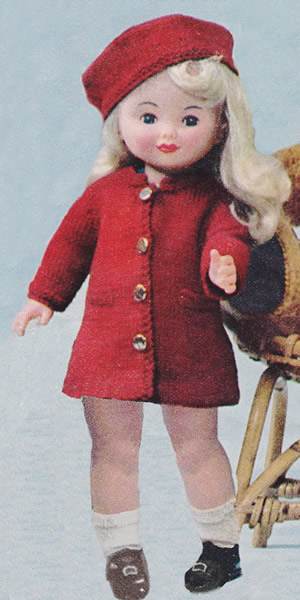
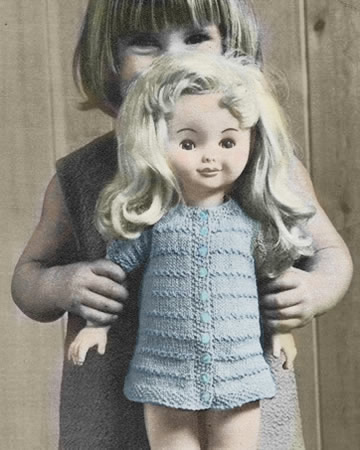
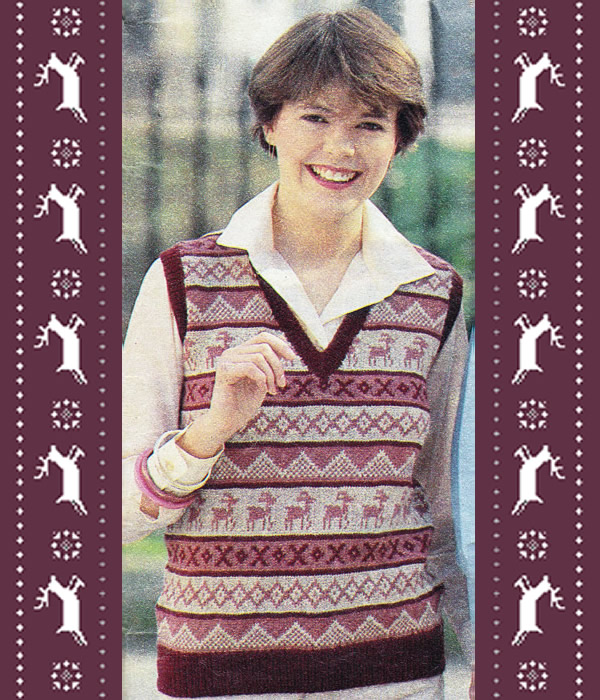
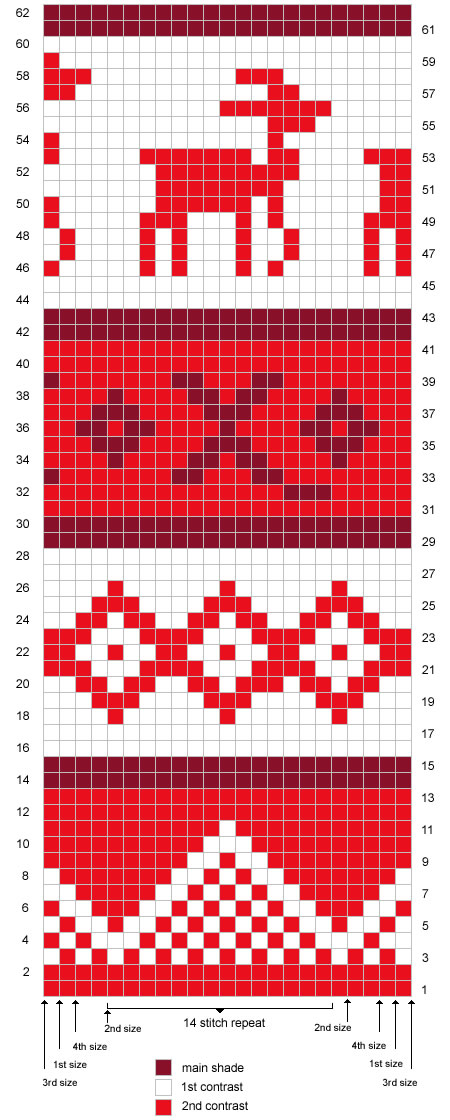
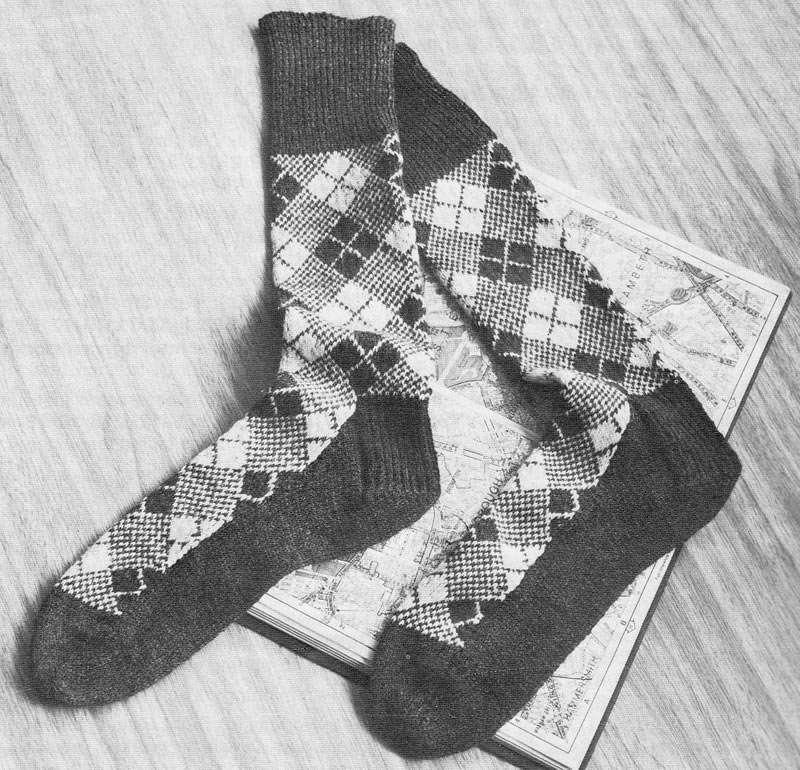
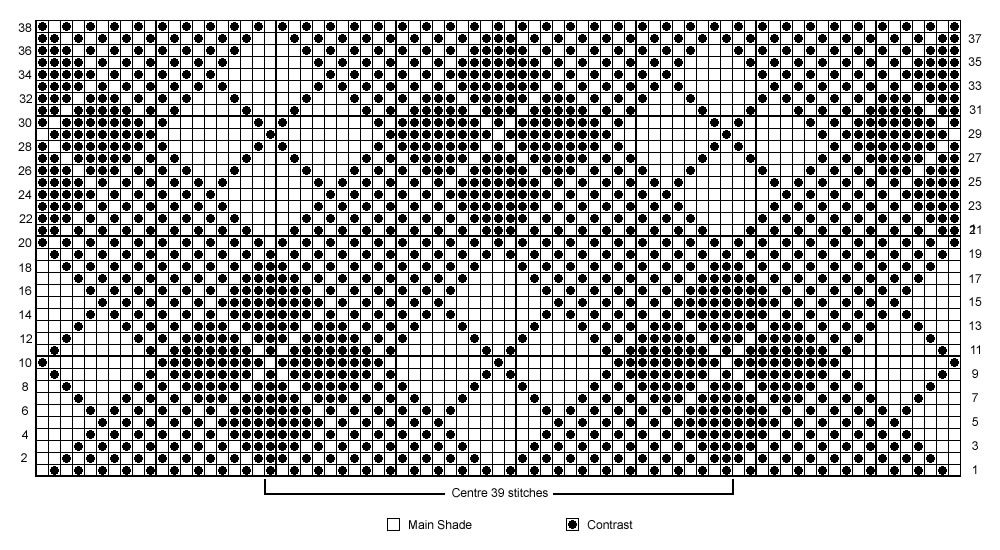
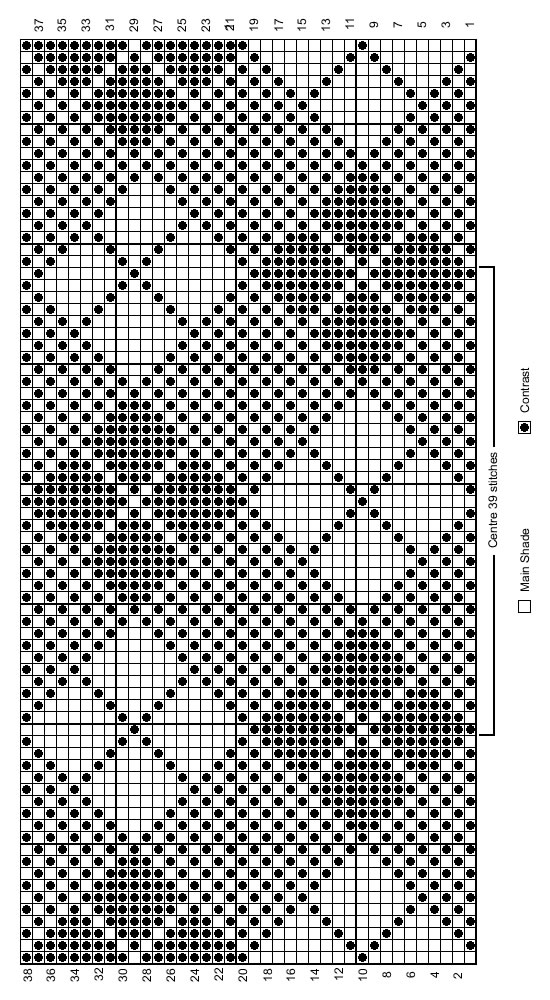

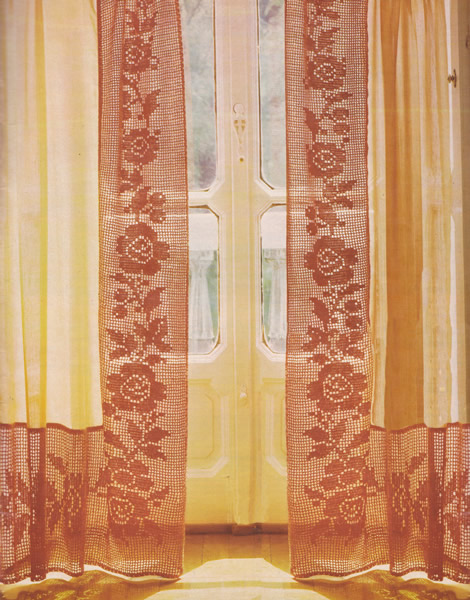
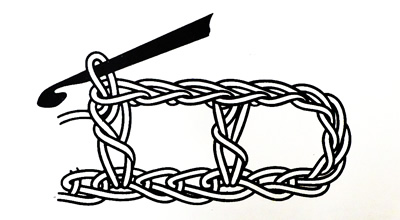
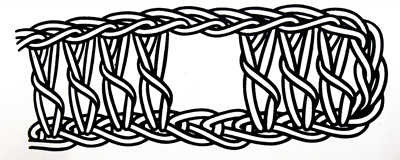
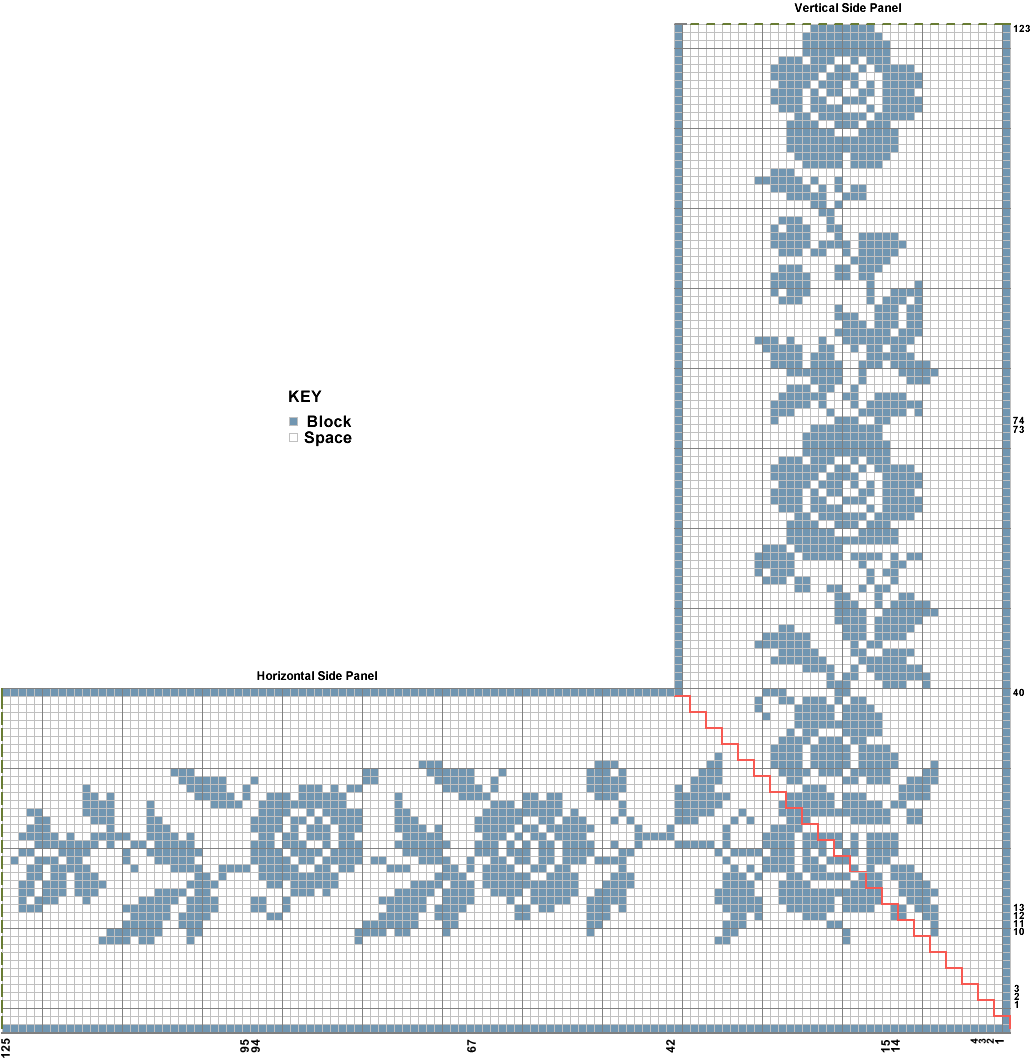
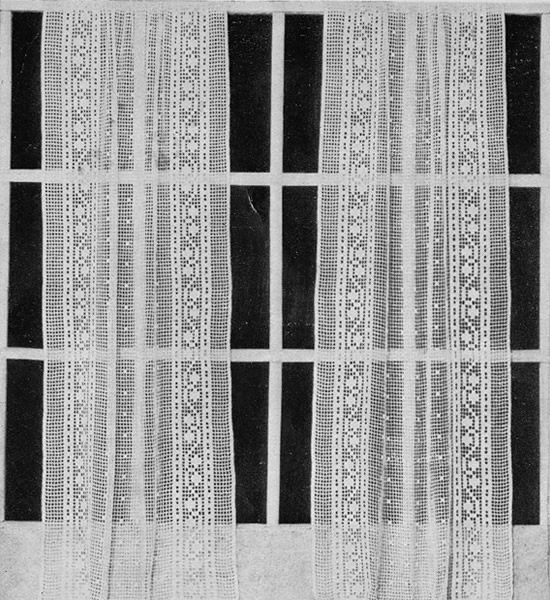
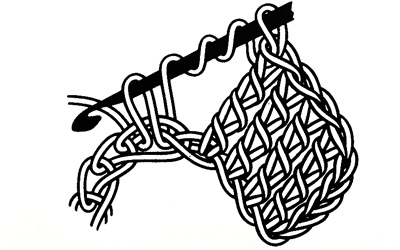
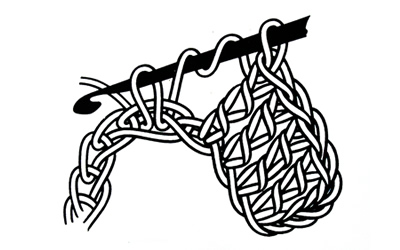
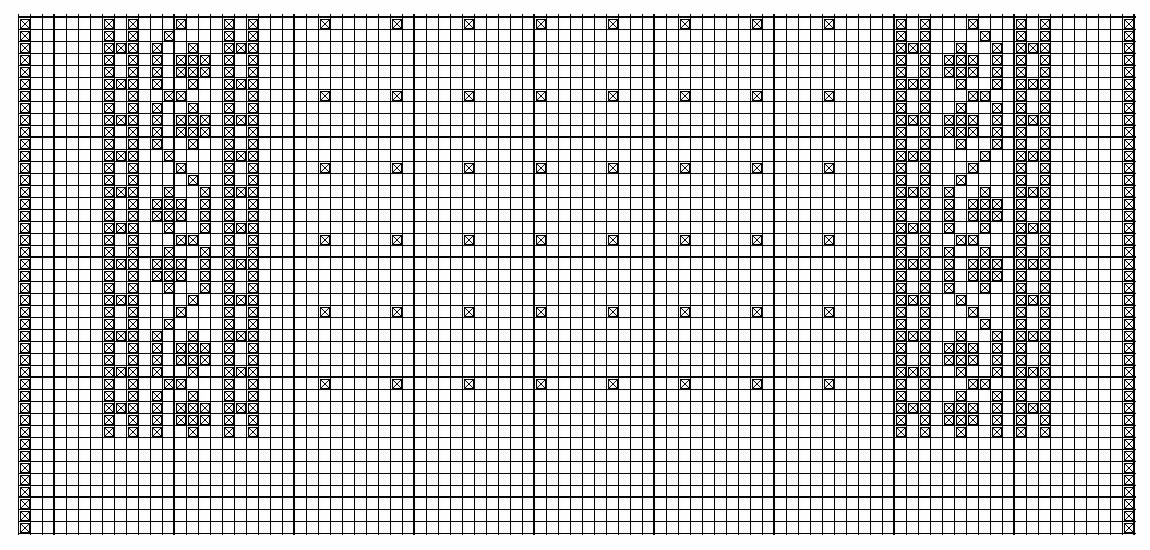
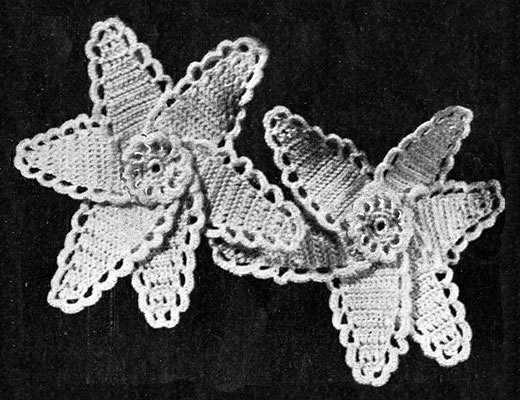
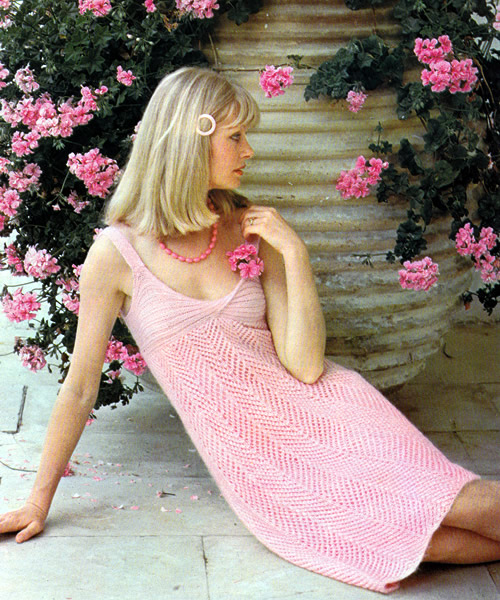
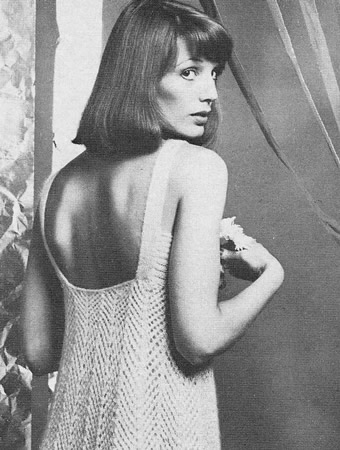
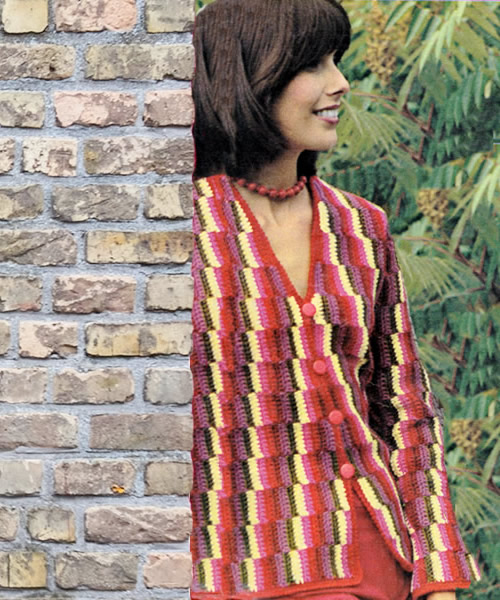
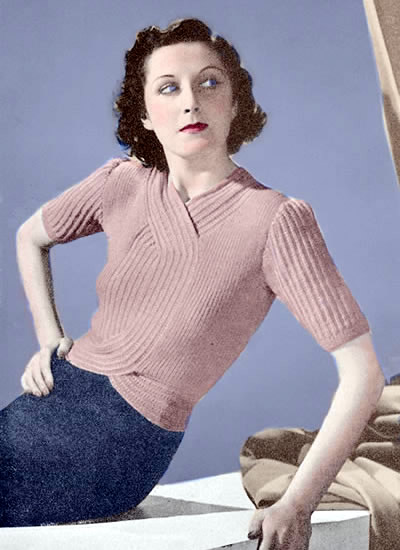
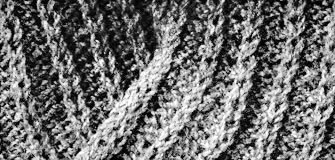

 .
.





